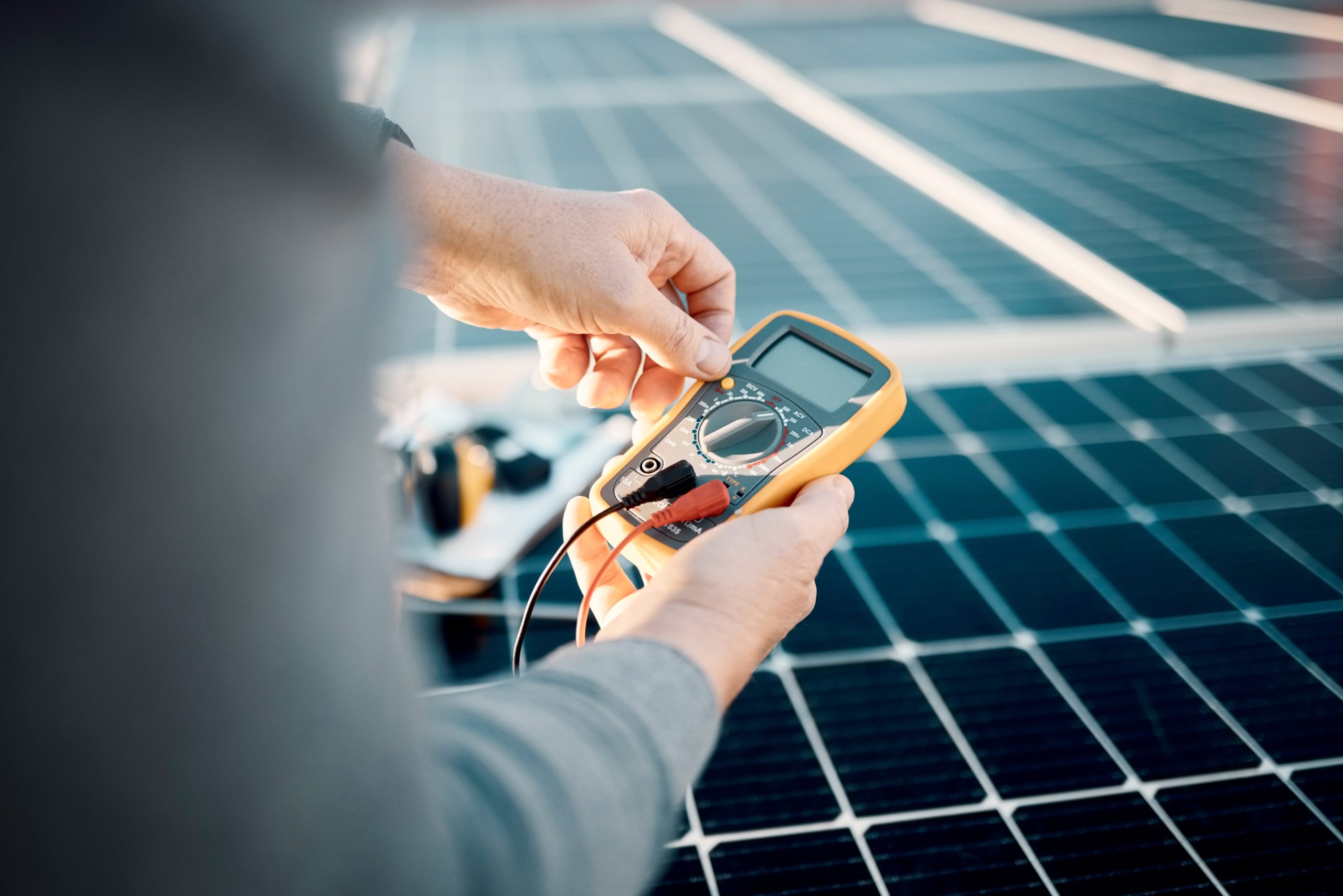Troubleshooting a solar installation involves diagnosing and addressing issues that prevent the system from operating at peak efficiency or functioning altogether. Below are common problems faced in solar installations and their potential solutions:
1. No Power or Low Power Output
Potential Causes:
- Solar panels are shaded.
- Incorrect or loose wiring connections.
- Malfunctioning charge controller or inverter.
- Faulty solar panels.
Solutions:
- Ensure no shading on the panels, even partial shading can significantly reduce output.
- Double-check all wiring connections to ensure they’re correct and secure.
- Test the charge controller and inverter with a multimeter to ensure they’re working correctly.
- Check individual solar panels for damage or discoloration.
2. Inverter Displaying Errors or Not Turning On
Potential Causes:
- Voltage from the solar array is too high or too low.
- Faulty or damaged inverter.
- Incorrect system configuration.
Solutions:
- Check the solar array’s output voltage to ensure it’s within the inverter’s operating range.
- If you suspect the inverter is faulty, contact the manufacturer or a professional.
- Review the system’s configuration, ensuring that the number of panels and their arrangement (series vs. parallel) matches the inverter specifications.
3. Battery Not Charging or Holding Charge
Potential Causes:
- Old or damaged batteries.
- Incorrect battery type for the installation.
- Charge controller issues.
Solutions:
- Test the battery voltage and replace batteries that no longer hold a sufficient charge.
- Ensure you’re using the right type of battery (e.g., lithium-ion, lead-acid) recommended for your solar setup.
- Check the charge controller settings and ensure it’s functioning correctly.
4. Intermittent Power Output
Potential Causes:
- Loose or corroded connections.
- Faulty components, like a charge controller or inverter.
Solutions:
- Inspect all wiring connections for looseness or corrosion. Clean or replace as needed.
- Test individual components to identify and replace any that are malfunctioning.
5. System Overheating
Potential Causes:
- Inadequate ventilation around system components, especially the inverter.
- Malfunctioning components generating excessive heat.
Solutions:
- Ensure that there’s sufficient airflow around the inverter and other components.
- Check individual components for malfunctions or signs of damage that might cause overheating.
6. Reduced Energy Production Over Time
Potential Causes:
- Dust, debris, or bird droppings on the solar panels.
- Aging solar panels (although the decrease should be gradual over many years).
Solutions:
- Clean the solar panels regularly.
- Monitor the system’s output over time. If there’s a sudden drop in efficiency, other issues might be at play.
7. Flickering Lights or Unstable Power
Potential Causes:
- Issues with the inverter or its settings.
- Power demands exceeding the system’s capacity.
Solutions:
- Reset or reconfigure the inverter.
- Ensure your energy consumption matches the system’s output. Consider expanding your system or reducing energy consumption.
Conclusion:
Regular maintenance and monitoring can preempt many solar installation issues. If you’re unsure about troubleshooting a particular problem, it’s always best to consult with a professional or the system’s manufacturer to avoid further complications or potential hazards





